Kinnistule on kavandatud kahte tüüpi hooneid, millede arhitektuurne olemus on analoogne. Eesmärk on liigendada hoonete 3 korruselist kehandit, et ei tekiks monotoonset paneelelamu tunnet ning jõuliselt eristada esimene korrus kahest ülemisest. Seetõttu on hoonete esimene korrus kavandatud tellisviimistlusega, vürtsitatud tellismüüride ja lillekastidega. Teise ja kolmanda korruse monoliitne maht astub esimese korruse pinnast välja poole ning on oma olemuselt helge ja elegantne. Kaugelt vaadeldes on tegu valgete elegantsete hoonetega pargis, hoonete vahel jalutades avaneb esimese korruse liigendatud ja detailirohke maailm.
Mõlema hoonetüübi kehand on ristkülik, millega on liidetud rõdud. Et rõdud ja põhimaht moodustaksid ühe monoliitse kompositsiooni, on teise ja kolmanda korruse valge betoonfassaad vertikaalselt ribiline ning ühildub seeläbi rõdude valgete puitribidega. Kaob ära selge piir, kus on puit ja kus on ribiline betoon. Esimese korruse maalähedane telliskivine maailm astub valgest mahust sissepoole ning moodustab koduse terrasside, müüride, panipaikade ja lillekastide miljöö. Et rõhutada veelgi esimese korruse eristust kahest viimasest, on esimese korruse akende proportsioon valdavalt ruudukujuline, samas kui kahele ülemisele korrusele on kavandatud piklikud püstised aknad, mis ühilduvad vertikaalse ribilisuse rütmiga.
Two types of buildings are planned for the property, the architectural nature of which is analogous. The aim is to articulate the 3-storey body of the buildings so that there is no monotonous feeling of a panel house and to strongly distinguish the first floor from the two upper ones. Therefore, the first floor of the buildings is designed with a brick finish, spiced brick walls and flower boxes. The monolithic volume of the second and third floors steps out of the surface of the first floor and is bright and elegant in nature. Looking at it from a distance, these are elegant white buildings in the park, walking between the buildings opens up the articulated and detailed world of the first floor.
The body of both types of buildings is a rectangle joined by balconies. In order for the balconies and the main volume to form one monolithic composition, the white concrete facade of the second and third floors is vertically ribbed and thus is compatible with the white wooden ribs of the balconies. The clear boundary between wood and ribbed concrete disappears. The rustic brick world of the ground floor steps inwards from the white volume and forms a homely environment of terraces, walls, storage rooms and flower boxes. To further emphasize the difference between the first floor and the last two floors, the proportion of the first floor windows is predominantly square, while the two upper floors are designed with elongated vertical windows compatible with the rhythm of vertical ribbing.
Martin Kinks, Margit Valma, Risto Parve, Kai Süda, Heldi Jürisoo
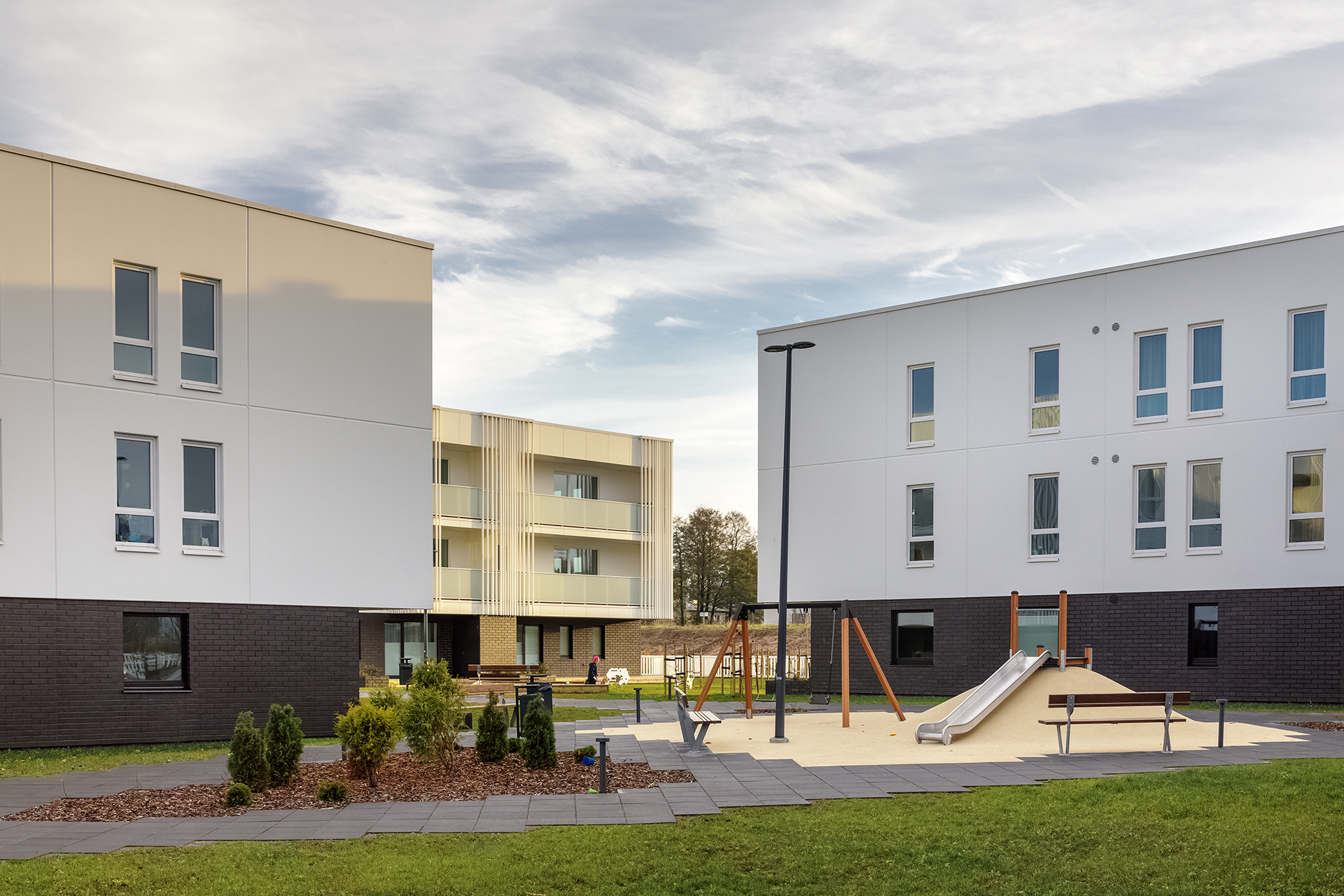

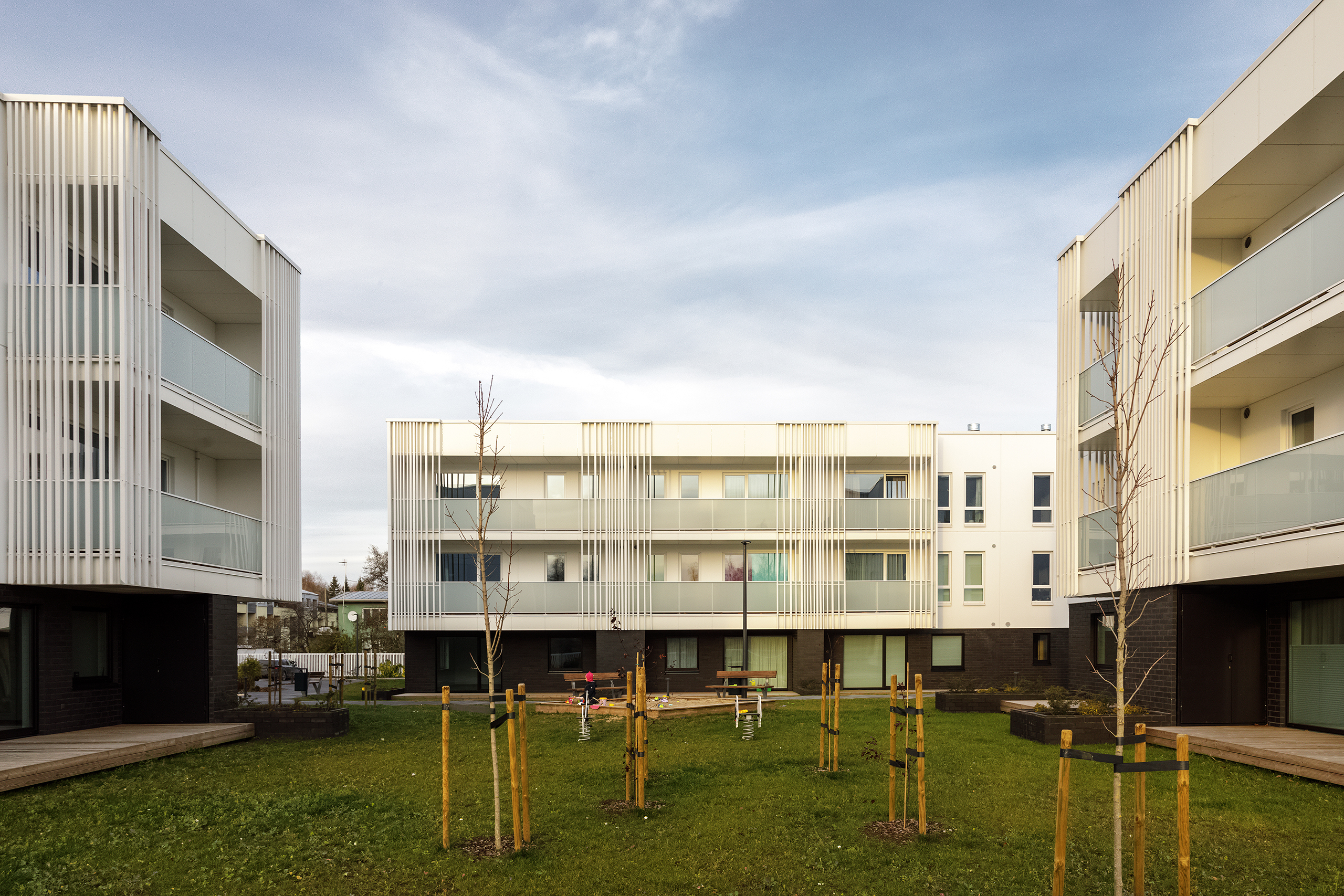

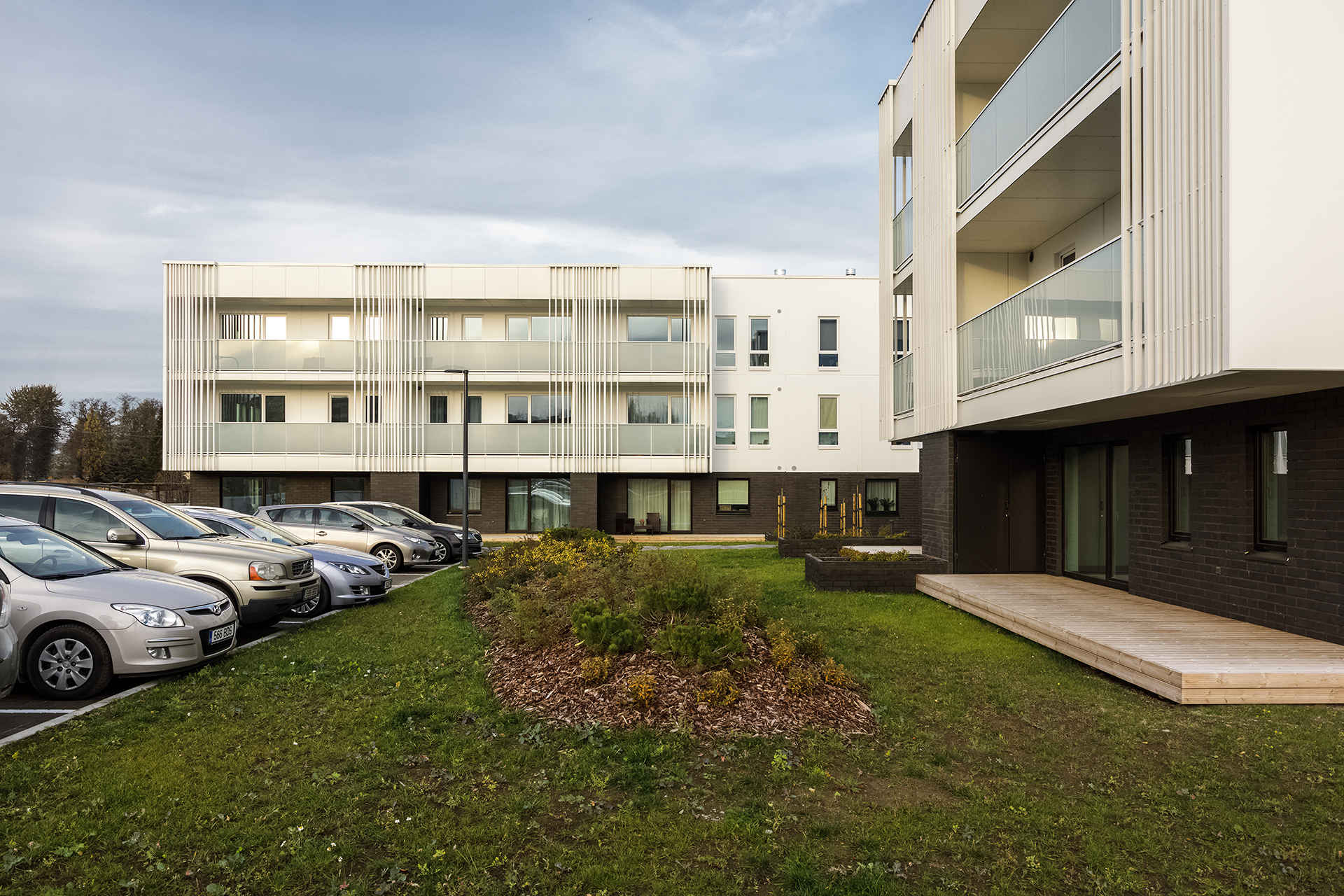
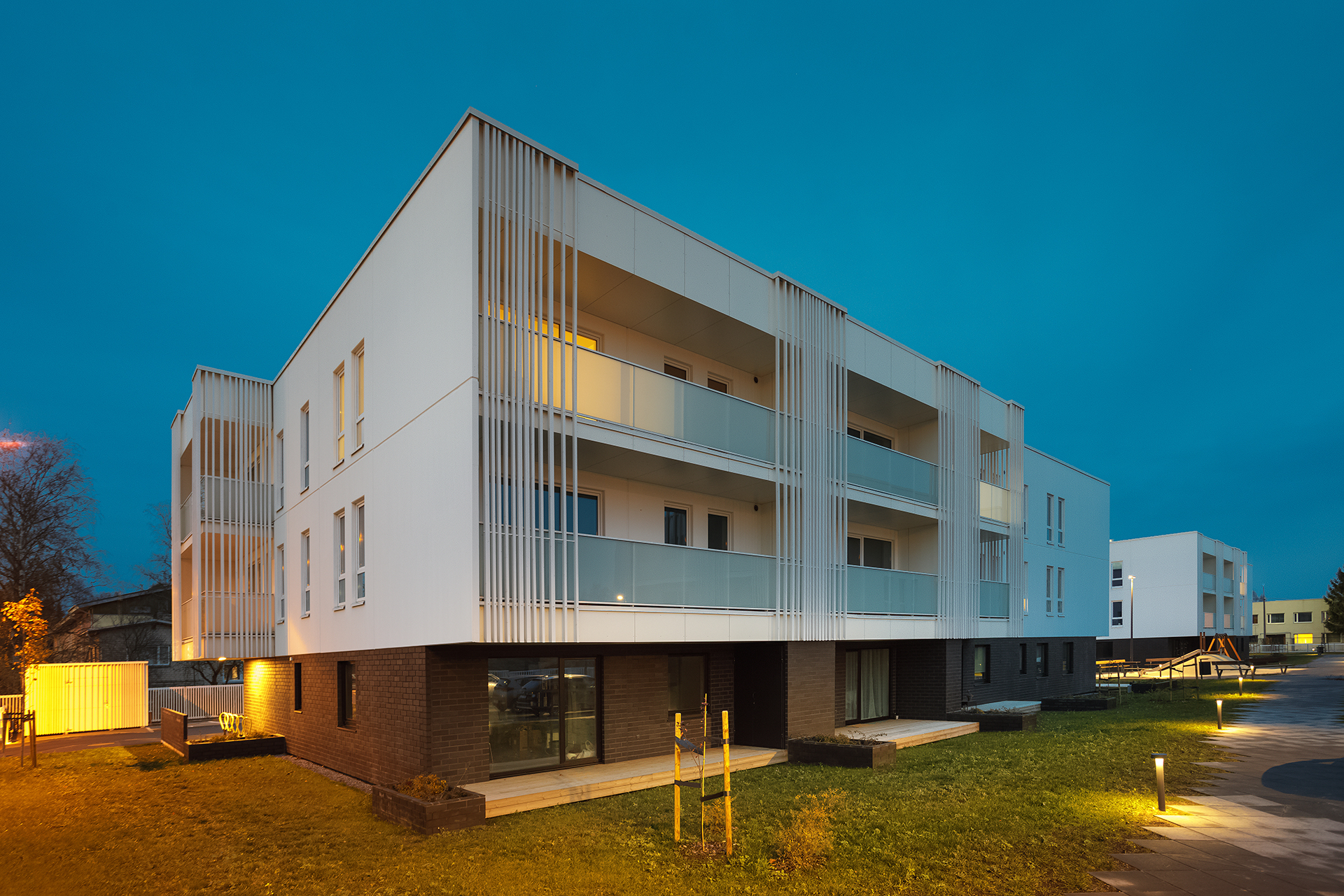
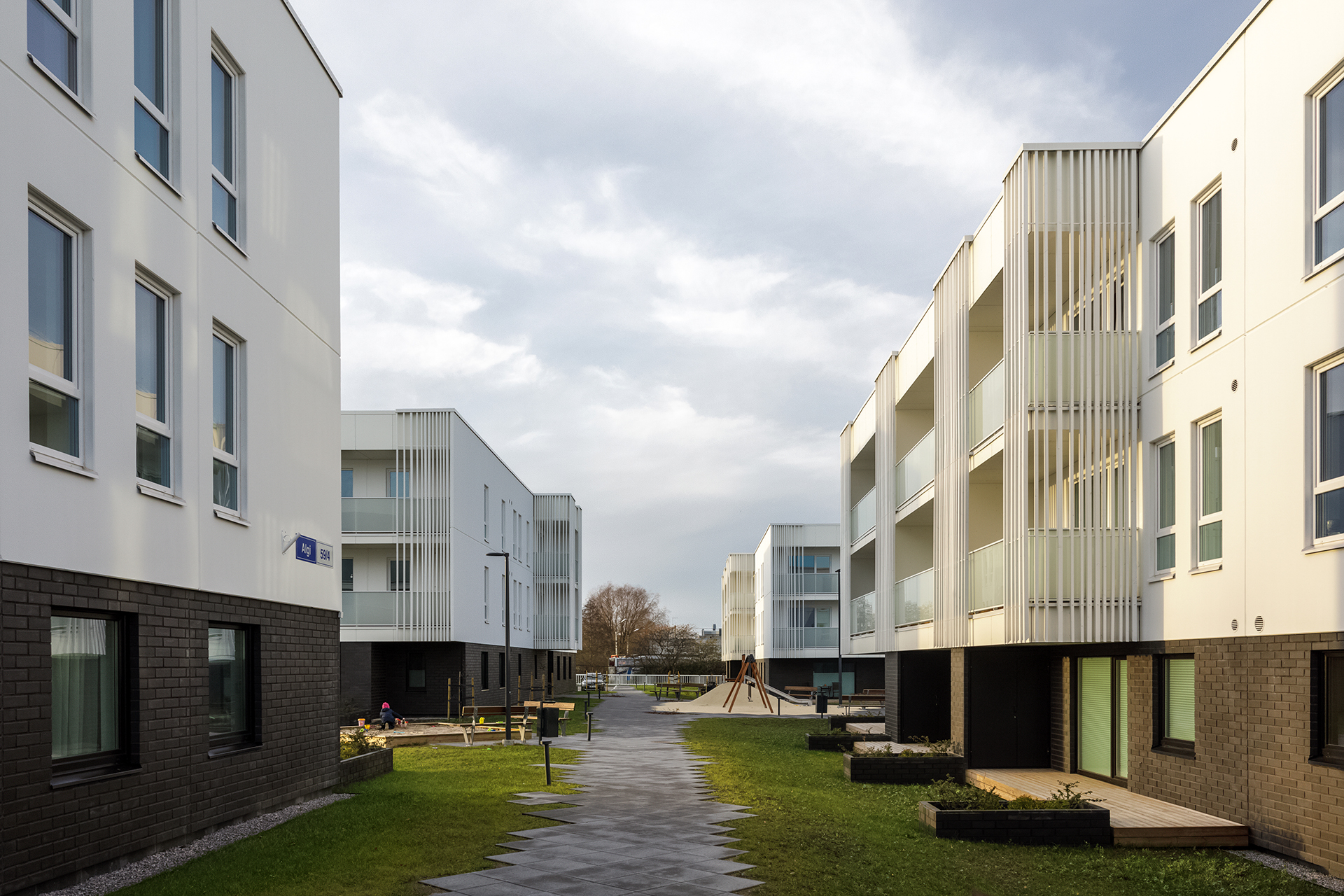
 Tüüp A - 1. Korrus / Type A - Ground Floor
Tüüp A - 1. Korrus / Type A - Ground Floor
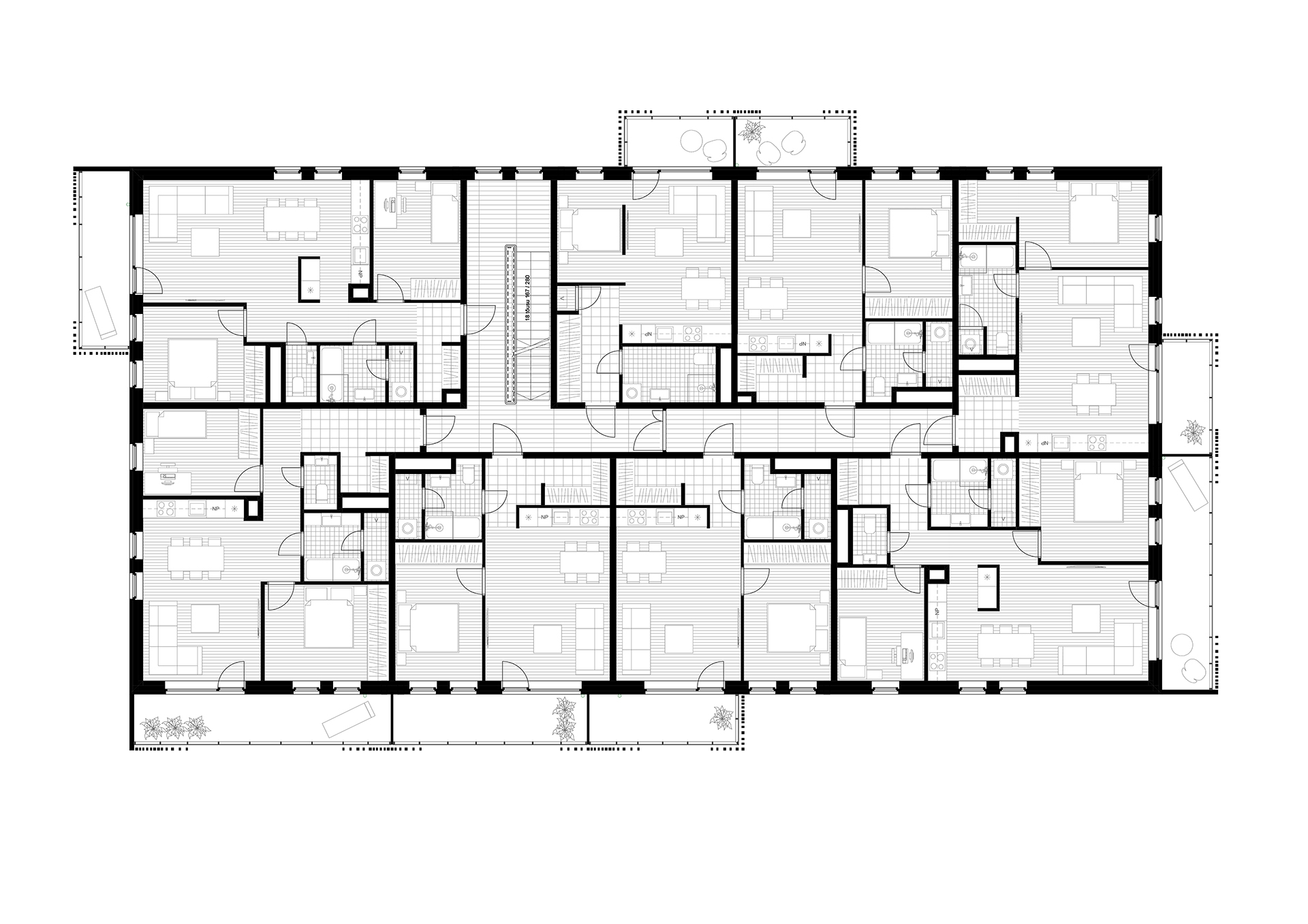 Tüüp A - 2. Korrus / Type A - First Floor
Tüüp A - 2. Korrus / Type A - First Floor
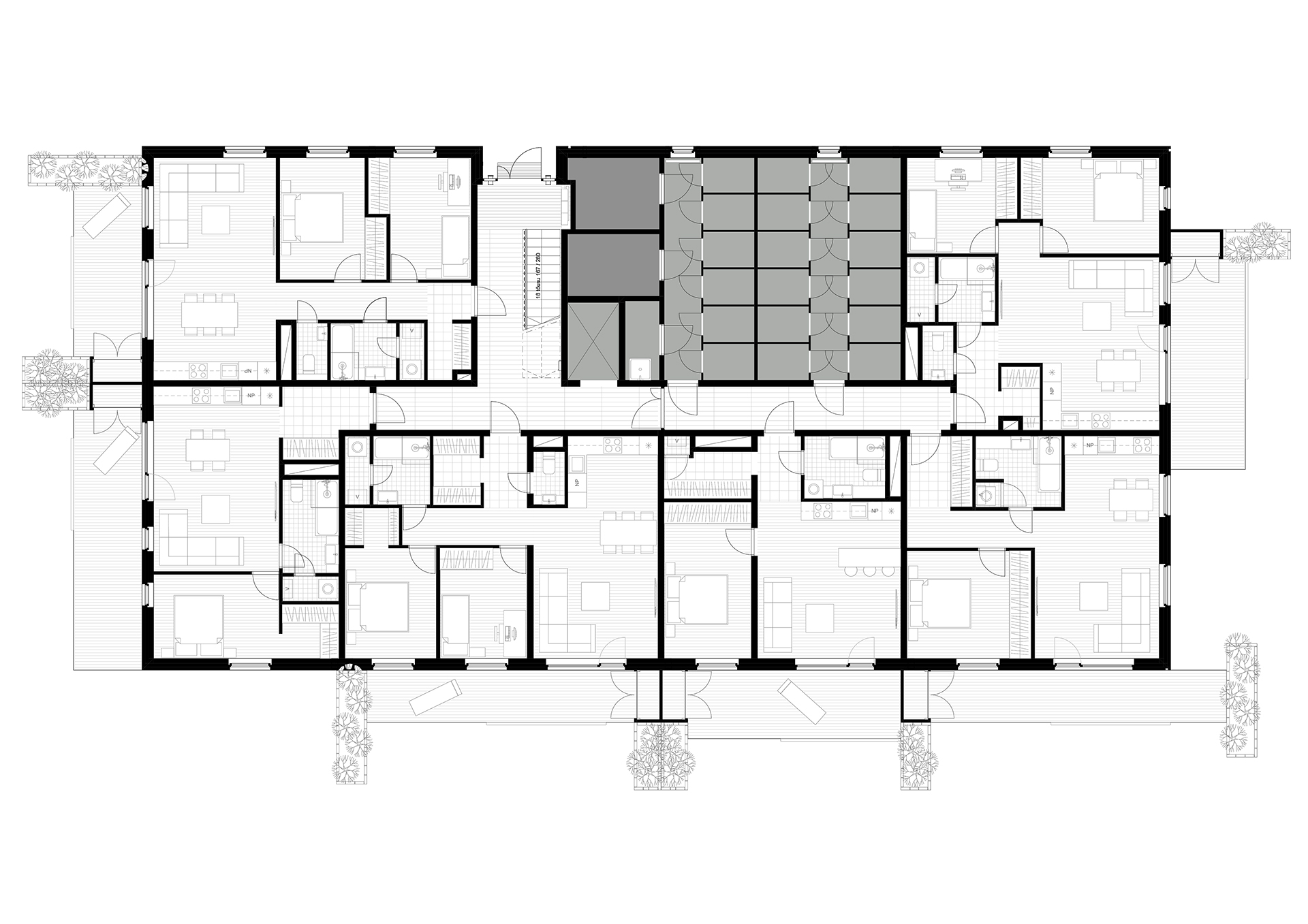 Tüüp B - 1. Korrus / Type B - Ground Floor
Tüüp B - 1. Korrus / Type B - Ground Floor
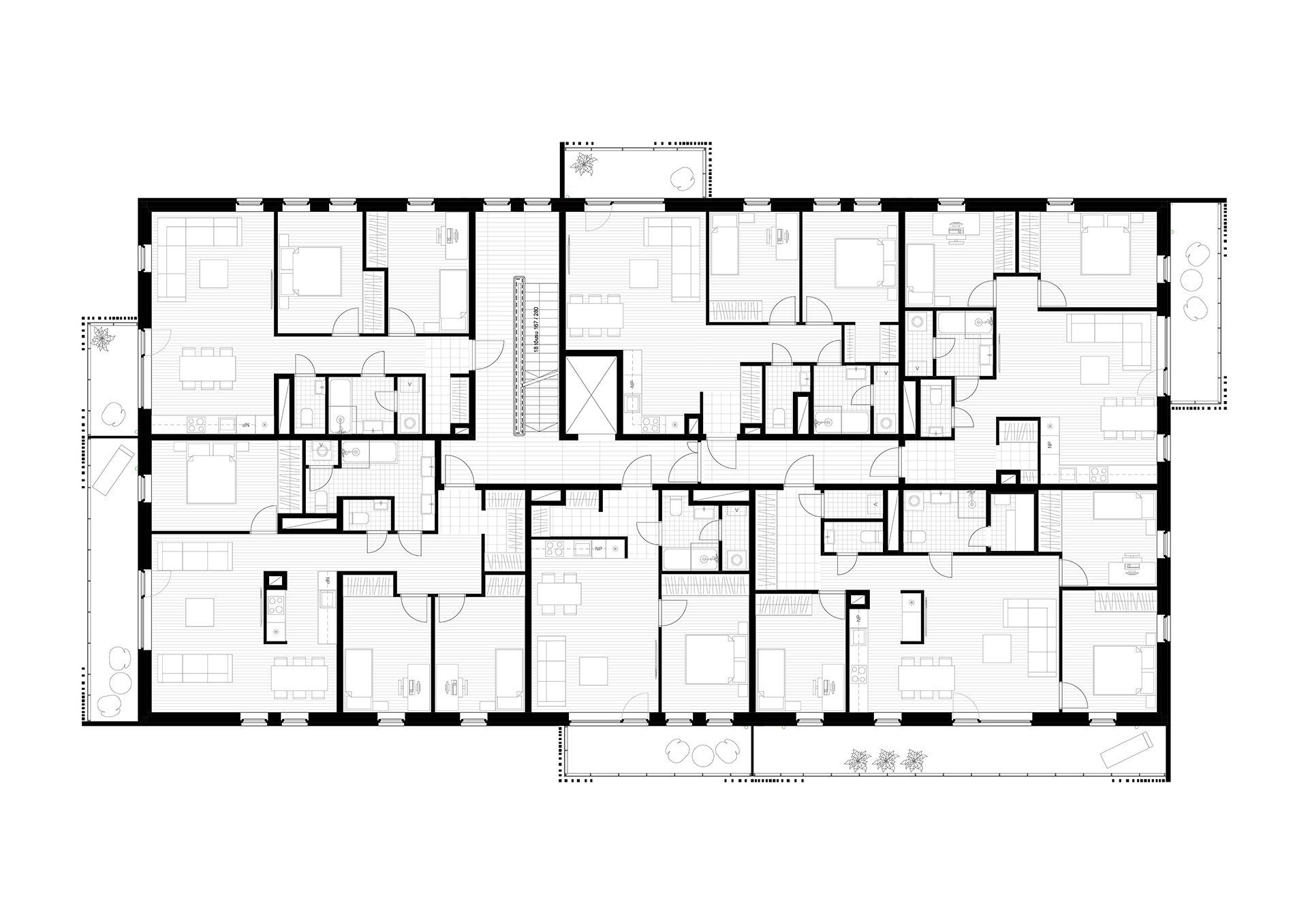 Tüüp B - 2. Korrus / Type B - First Floor
Tüüp B - 2. Korrus / Type B - First Floor
 Tüüp A - Lõige / Type A - Section
Tüüp A - Lõige / Type A - Section
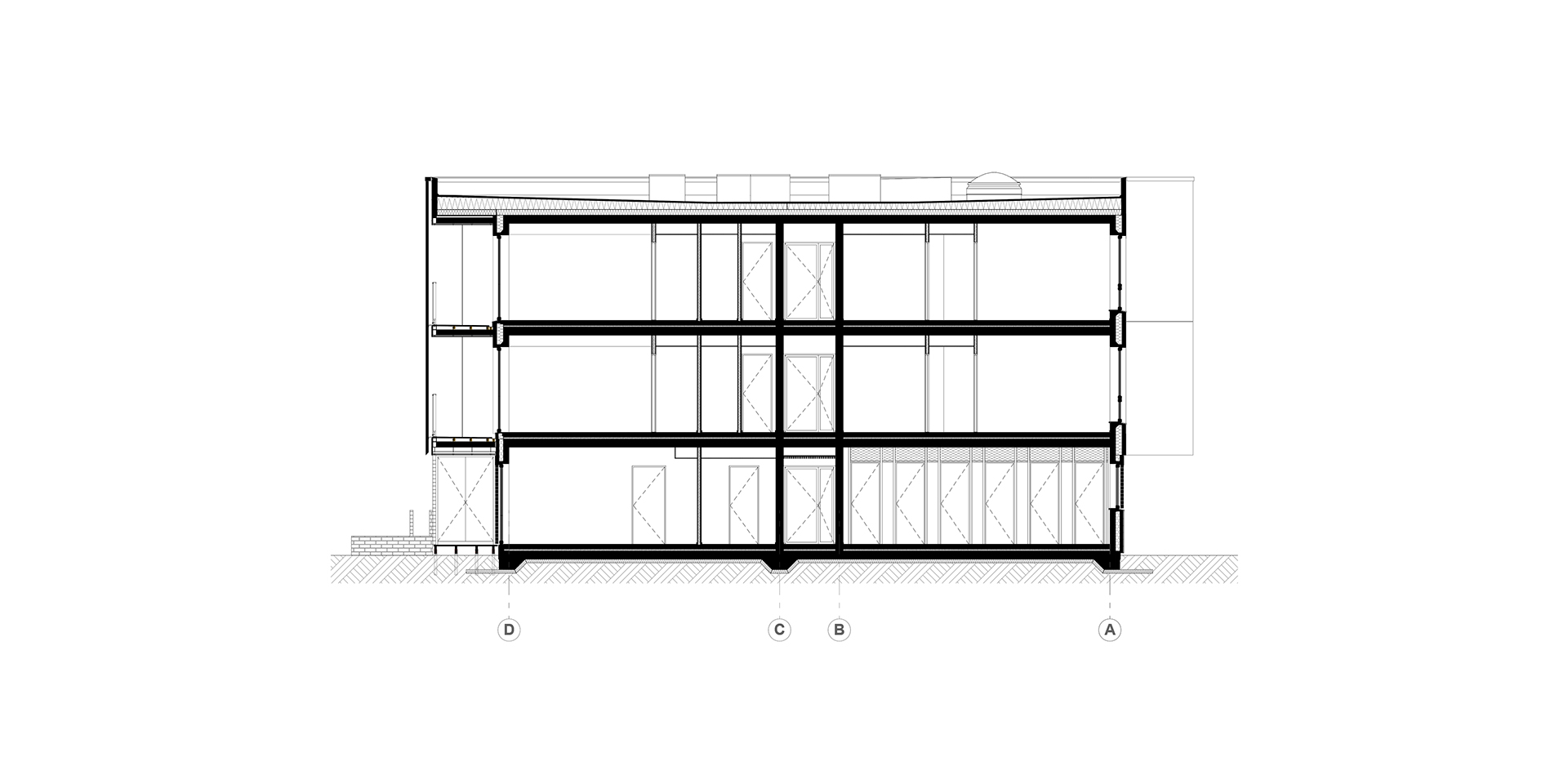 Tüüp B - Lõige / Type B - Section
Tüüp B - Lõige / Type B - Section

